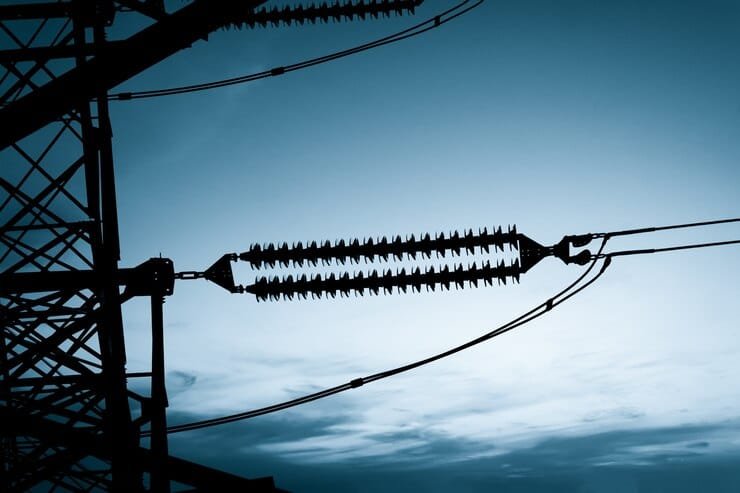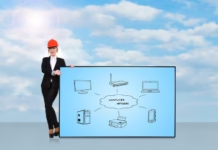The air crackles with a tension you can nearly taste. It’s not the crackle of bad cable, but the low simmer of a cyberattack — a threat that is eating away silently at the foundations of our connected universe. For decades now, cable companies have been the keepers of our castles, the stalwart sentinels of the digital age, delivering entertainment and connectivity. But the drawbridge is lowered, and the walls are collapsing.
Do you recall the panicked whispers in the boardroom? The whispered conversations about the latest breach, the growing ransomware demands, the sobering moment that the apparently robust network is, in reality, open to attacks? I’ve been there. I’ve watched the sweat drip from the brows of seasoned network engineers as they fought to contain a breach that threatened to unravel years of painstaking work, to expose millions of sensitive customer records. “It’s not something that we haven’t seen before,” one veteran acknowledged, somehow conveying more than what his words expressed.
It’s not only about stolen data; it’s about a breaking down of trust, debilitating losses of funds, and the risk of devastating service shutdowns. In a hyper-connected world, a cable network is not simply an entertainment provider; it is the lifeblood for innumerable businesses, the backbone of critical infrastructure, a vessel for sensitive information that flows between homes, businesses and governments. A breach is not simply a technical failure, a veering off course; it is a strategic failure, an opening, a hole in defenses large enough to take everything down.
This blog post is not a dry technical analysis, it is a wake-up call. So we’ll explore the vulnerabilities that modern cable networks face, what tactics the bad guys use and most importantly, things you can do to shore up your own defenses. For in this growing cyberwar, complacency is unacceptable. The future of your network — and potentially your company — is on the line. So, what can be done to rebuild, even better than before?
The network security landscape is a warzone, a perpetual battle between innovation and new-age threats. Envision a digital citadel, besieged and battered, its walls constantly under assault by a relentless, shape-shifting foe. This is the world companies play in, or part of, and discovering the trends that govern this world is imperative not just to survive, but to thrive.

Positive Trends: A Rising Tide Lifts All Boats (We Hope)
- The Rise of AI and Automation: Here comes our cavalry. Artificial intelligence threat detection and response systems are not the future but they are helping shape the industry. Solutions based on AI, such as CrowdStrike, which offers Endpoint Detection and Response (EDR) solutions, are using AI to anticipate threats and eliminate them before they can be exploited. This means the response to incidents is less time-consuming and costs less in time lost. Actionable Insight: Focus on R&D in AI-based security solutions. Leverage automation so that human analysts can be redeployed towards more effective functions.
- The Cloud Security Market is Expanding: The cloud is the new frontier, and its expansion drives growth. As companies move more towards cloud environments, the need for strong cloud security solutions grows exponentially. Market share is going to companies like Palo Alto Networks, which is offering a full-scale cloud security platform. Actionable Advice: Look into developing niche cloud security solutions for specific public cloud (AWS, Azure, GCP). Concentrate on those solutions addressing the special vulnerabilities of cloud environments.
The Enemy Evolves, and so Must We: Adverse Trends
- The Growing Complexity of Attack: The enemy adapts, and never sleeps. With higher levels of sophistication among cybercriminals, using more advanced techniques such as polymorphic malware, AI-driven attacks, etc. Ransomware attacks are getting more common and devastating. The recent attack on the Colonial Pipeline is a vivid reminder of the catastrophic damages. Actionable Insight: Adopt threat intelligence tools that are capable of monitoring and predicting not just attacks, but trends. Work on your incident response plans and do regular security audits.
- Pillars of Society Become Targets: The cost of operating and protecting our smart infrastructure will only grow: Cyber resiliency must be built into the processes we use as a society. Many organizations face the challenge of attracting & retaining talented pool of people. This is a war of understaffed troops. Actionable Insight: Provide ongoing training and development opportunities for employees. Collaborate with universities and vocational schools to create a pathway to work for cybersecurity workers MSSPs (Managed Security Service Provider) are a low-cost option for assistance if you lack the internal experience or expertise.
The Future Battlefield:
As you could probably tell, the network security marketplace is a dynamic ecosystem and keeping rolling up with the streams of innovation is an opportunity. It is critical for companies to adopt proactive security practices, tune in to the benefits of AI and automation, and build a culture of security awareness. Because in the changing world of cybersecurity, the future is not for the faint of heart. Neglecting these trends is like leaving the door of your digital fortress wide open – a call for disaster. This fight is far from over, but businesses can win this critical war by understanding the trends and taking decisive action.
At “MediCare Central,” a busy healthcare provider, tension crackled through the server room. As the sharp-eyed Kevin led her security team against a ransomware attack, Dr. Anya Sharma, Chief Information Officer, watched. The digital equivalent of a venomous viper was chewing through their patient records, endangering millions of dollars of fines and their reputation irreparable. Kevin’s crack team, a well-oiled machine of firewalls, intrusion detection systems and a painstaking multi-factor authentication protocol, fought back, a binary David against a Goliath of malware. It has been contained by dawn thanks to the proactive network segmentation and a timely incident response. A hard-fought win, it proved the critical need for strong network security in the healthcare sector, where customer data is lifeblood—and ripe for the picking.
At “AutoTech Dynamics,” company in the self-driving car sector, the hum of servers faded into the organic chaos of creativity in the engineering co. Marcus, the lead engineer on the case, recalled a harrowing experience where a rogue actor tried to access their autonomous vehicle software through a backdoor. So, their digital lock on the intellectual property almost turned green before the advanced threat intelligence system acted as a security system to make sure that no intruders get in. It was this incident that drilled home their imperative for a complete stack of network security — from strong endpoint protection to AI blocks on every anomaly — to keep their innovative tech under wraps.
Across the hall in “Global Manufacturing Inc.,” the music of bang saw as the machinery was operating. Sarah, their Chief Security Officer, had a different sort of threat to contend with – the constant specter of industrial espionage. She pictured her network as a castle, impenetrable, but open to those who need access, employing multiple layers of access control that would secure the gates to their systems and keep the intruders out. And network monitoring—the relentless sentry keeping watch over the digital ramparts, warning Sarah and her team about any odd behavior, no matter how faint.
For Cable TV operators, security is an ongoing war against piracy and service outages. [This is the quiet hum of a network control center, where millions of signals flow — V.P.] A sudden attack — a Distributed Denial of Service attack — could once again overwhelm the system, leaving viewers in the dark. The best defense is proactive, from advanced intrusion prevention systems to ongoing security audits and employee education. The mantra of protecting the signal, delivering signals 24X7, protecting data of customers is in their daily chorus. It’s a secret war, but the stakes — customer trust and corporate reputation — are high.
“We have been way too reactive,” barked Marcus, the chief technology officer of CableVision, from his office, where he paced. “New threats are advancing faster than our security systems.” Jeremy, his head of security, nodded grimly. “Exactly, sir. The landscape is shifting. “We have to adopt AI-powered solutions more aggressively.”
Just that morning, Sarah had found herself reading over a proposal from SecureNet, which was using AI to detect and respond to threats in real-time. Since 2023, their organic strategy was heavily leaning into machine learning algorithms to vicariously detect and vitiate zero-day exploits – a far cry from their legacy sig-nature based detections of yore. It wasn’t simply faster detection, but predictive analysis, foreseeing attacks before they happened. Fewer outages and improved customer satisfaction for CableVision.
And then Sarah later tells Marcus about another option. “Cloud-based security services are very much needed,” she said. “They provide scalability and centralized management that we just can’t duplicate internally.” I also mentioned in the arobjects business plan article that they were looking quite heavy for CloudShield then and CloudShiled is also showing a lot of inorganic growth this year. So when, last year, CloudShield bought three smaller firms with expertise in various specialties related to cloud security, it was only natural that CloudShield’s product support engineer was quickly familiarising herself with CloudShield’s products and expertise in areas like protecting IoT devices on their cable network – a big sore point for CableVision. Their acquisition strategy afforded them a breadth and depth of service that would have proven impossible to replicate organically.
“The cost is a challenge,” Marcus said, rubbing his chin. “But the threat of a serious breach exceeds that. Sarah agreed. So, this was why the integration of SecureNet’s artificial intelligence-based threat detection with CloudShield’s robust overall cloud security was a divine match for a modern, powerful security stance. In the tens of millions range, that much. But this was a necessary spend, because customer data and brand safety trumped all. They agreed to proceed with both collaborations as their combined organic-inorganic growth was aligned with the changing face of network security in 2024. For the time being, CableVision appeared secure.

Outlook & Summary: A Cable Apocalypse Averted?
The cable business, once as impregnable a cathedral of analog warmth as ever was built, is in the process of rivalling the Roman Empire for how quickly it can collapse under the pressure of a digital siege. This is not about declining subscriber numbers; it’s a cybersecurity crisis on the horizon, a threat that is much more insidious than just a plain old outage. It took this blog post to uncover the multiple layers this vulnerability – and its resulting exploit – evolved through this landscape of outdated infrastructure, ineffective patching and its complete lack of security measures. We saw all too vividly — through case studies and sobering statistics — how an insecure cable network can become a fertile ground for malicious actors, resulting in data breaches, service disruptions and even physical harm.
The next five to ten years for the cloud of network security related to a cable operator won’t just be a patching of the holes, it will be a change in the complete architecture. Envision a scenario in the near future where threat detection is relational between multiple devices, not just cable boxes— AI, machine learning, blockchain technologies are employed to build unbreakable chains to secure user data and the entire network survives on zero-trust, but treats them with laser focus while evaluating each connection to fact check its validity. This isn’t science fiction; it’s the inevitable evolution. Unless they adapt, cable providers face a digital dark age, a catastrophic loss of trust and, potentially, devastating financial repercussions. The analogy is extreme: it is like a medieval castle confronting a contemporary army with cannon and UAV – the answer is evident.
And this isn’t just about tech; this is about a fundamental change in mentality. Security must not be an afterthought; it has to be interwoven into every aspect of a cable operator’s daily life. The key takeaway? Robust, proactive cyber protections aren’t a luxury — they are the only way to stay in business. The question is, are you going to be able to navigate your organization through this digital upheaval, or are you going to become another casualty on the battlefield of a crumbling castle?






